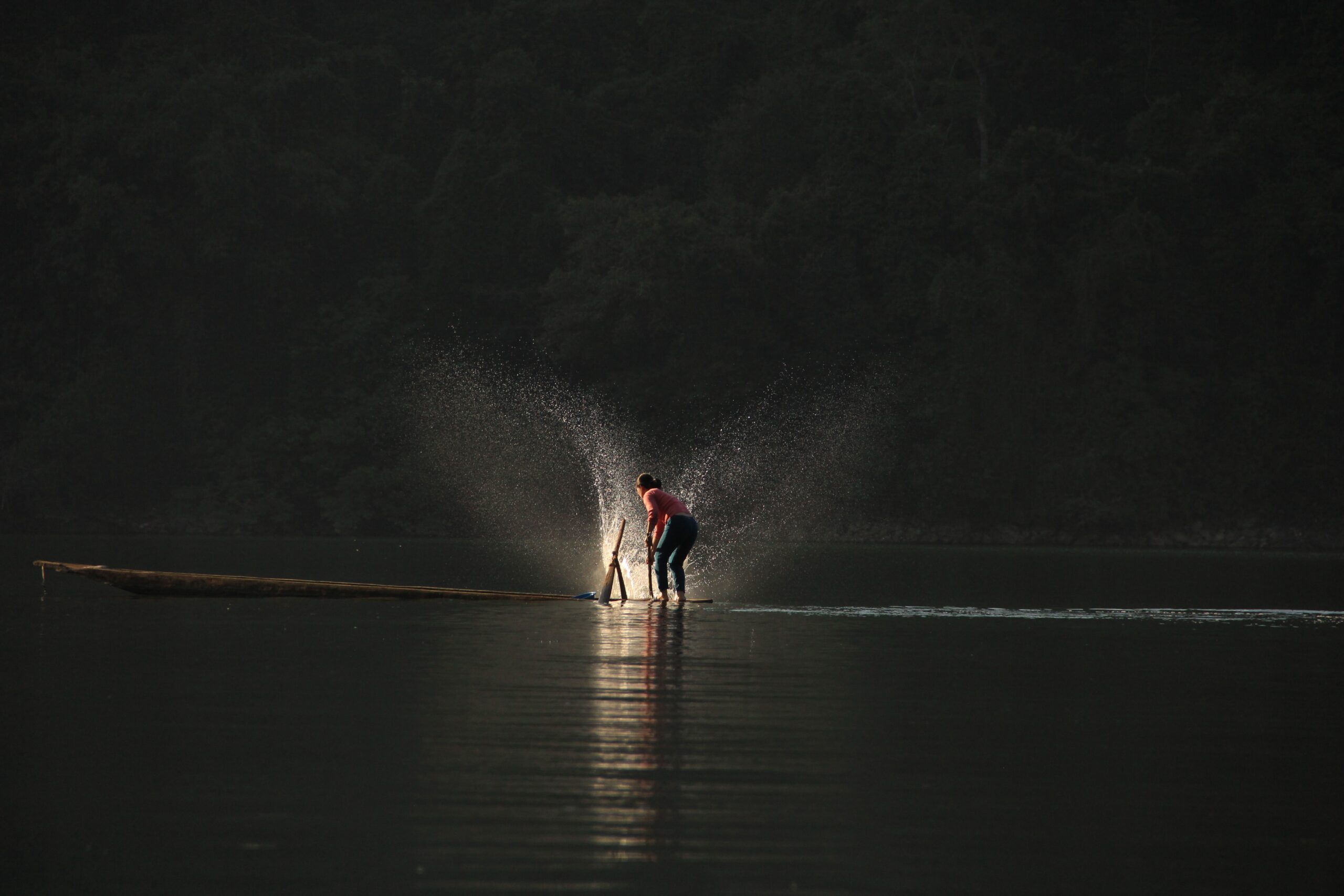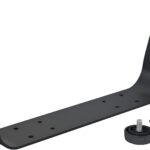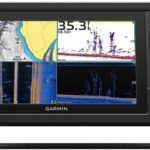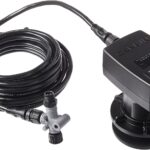Imagine yourself under the dark sky, the moon casting a gentle light as you cast your fishing line into the tranquil water. Night fishing holds a certain allure, providing a unique experience for anglers seeking a different kind of adventure. In this article, we will explore the techniques and safety tips to make the most of your night fishing escapades. From choosing the right gear to ensuring your safety, we will equip you with everything you need to know to navigate the waters in the dark. So grab your rod and let’s embark on an unforgettable night fishing journey together.
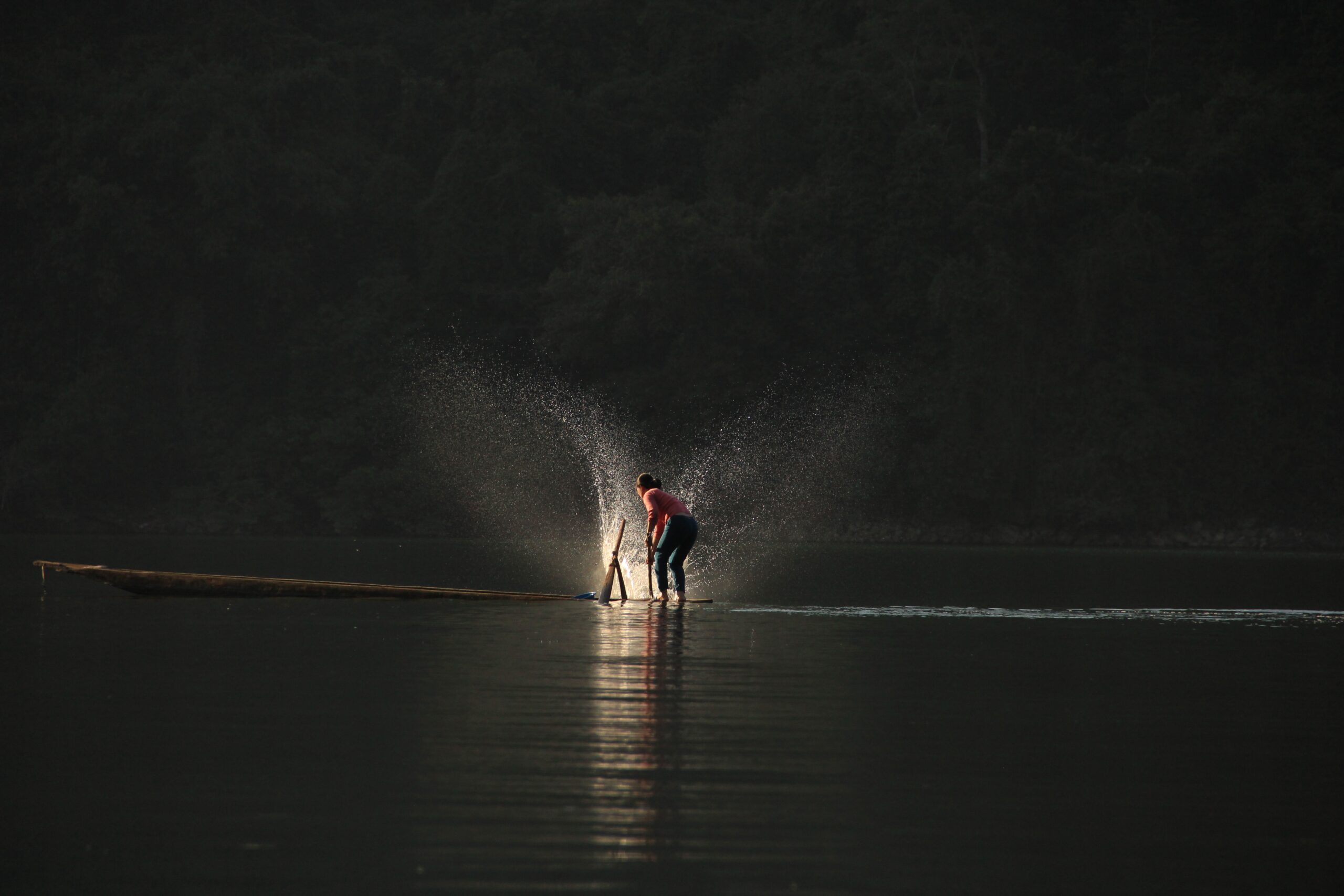
Choosing the Right Location
Researching potential fishing spots
When it comes to choosing the right location for night fishing, thorough research is key. Start by gathering information about potential fishing spots in your area. Look for lakes, rivers, or ponds that are known for their fishing opportunities and have a reputation for producing good catches during the night. Online fishing forums, local fishing clubs, and advice from experienced anglers can be valuable sources of information to help you narrow down your options.
Considering safety and accessibility
Once you have a list of potential fishing spots, it’s important to consider safety and accessibility. Look for areas that are easily accessible, especially if you plan to fish at night. Check if there are parking facilities nearby, as well as any regulations regarding fishing after dark. Make sure the area is well-lit or that you can bring additional lighting equipment to ensure your safety while fishing.
Looking for areas with suitable underwater structures
Another factor to consider when choosing a location for night fishing is the presence of suitable underwater structures. Fish tend to congregate around structures such as submerged trees, rocky outcrops, or drop-offs. These structures provide hiding places for prey and predatory fish alike. By targeting areas with suitable underwater structures, you increase your chances of finding active fish during the night. Look for spots where the water depth drops off significantly or where there are submerged obstacles that can attract fish.
Essential Gear and Equipment
Selecting a reliable fishing rod and reel
A reliable fishing rod and reel are essential for a successful night fishing trip. Look for a rod and reel combo that is specifically designed for the type of fishing you plan to do. Consider the weight and length of the rod, as well as the gear ratio of the reel. A sturdy rod will provide the strength necessary to handle larger fish, while a high gear ratio reel will help you quickly reel in your catch.
Choosing the appropriate fishing line
Choosing the right fishing line is crucial for night fishing. Opt for a line that has a high visibility color, such as a neon or fluorescent line. This will make it easier for you to see subtle movements or bites in the dark. Additionally, consider using a braided line for its strength and sensitivity, as it can help you detect bites more accurately.
Using glow-in-the-dark lures and bait
Using glow-in-the-dark lures and bait can greatly enhance your chances of attracting fish during the night. These lures and bait are designed to emit a soft glow in the water, making them more visible to fish in low-light conditions. Experiment with different sizes and colors to see what works best in your fishing location. Keep in mind that some fish species are more attracted to certain colors than others, so it’s always a good idea to do a bit of research on the local fish species before choosing your glow-in-the-dark lures and bait.
Packaging essential tackle and accessories
When preparing for a night fishing trip, packing essential tackle and accessories is crucial. Make sure to bring a variety of hooks, sinkers, and bobbers, as well as pliers or a multitool for tackle adjustments. It’s also a good idea to bring spare batteries for your fishing lights, as well as extra glow sticks for added visibility. Don’t forget to pack a tackle box or bag to keep all your gear organized and easily accessible.
Carrying a headlamp or flashlight
A headlamp or flashlight is an indispensable tool for night fishing. It provides hands-free lighting, allowing you to see what you’re doing while keeping your hands free for casting or handling fish. Choose a headlamp or flashlight with a strong beam that can illuminate a wide area. Consider bringing spare batteries or a backup light source in case the batteries on your main light source run out.
Safety Precautions
Informing someone about your fishing plans
Before heading out for a night fishing excursion, it’s essential to inform someone about your plans. Let a family member or a friend know where you’ll be fishing, how long you’ll be gone, and when you expect to return. This way, if any emergency arises, someone will be aware of your whereabouts and can alert the authorities if necessary.
Checking weather conditions beforehand
Checking the weather conditions before your night fishing trip is crucial for your safety. Keep an eye on forecasts for any potential storms, strong winds, or adverse weather conditions. Fishing during severe weather can be dangerous, so it’s important to reschedule your trip or seek shelter if the conditions become unfavorable.
Wearing appropriate clothing and footwear
Wearing appropriate clothing and footwear is essential when fishing at night. Dress in layers to accommodate changing temperatures and make sure to wear moisture-wicking and breathable fabrics to stay comfortable. Avoid wearing bright, flashy colors that could potentially scare away fish. Additionally, wear sturdy footwear with good traction to prevent slipping on wet surfaces or uneven terrain.
Using insect repellent and sunscreen
Don’t forget to protect yourself from insects and the sun’s harmful rays while night fishing. Apply insect repellent to ward off mosquitoes and other biting insects. Mosquitoes are particularly active at dusk and dawn, and their bites can be not only uncomfortable but also potentially carry diseases. Additionally, apply sunscreen to exposed areas of your skin to protect yourself from sunburn, even during the night. The reflection of the moonlight on the water can still cause UV damage to your skin.
Being cautious of slippery surfaces
Night fishing often means navigating in low-light conditions, which can make it difficult to see slippery surfaces. Be cautious of rocks, docks, or other areas that may become slippery due to wet or dewy conditions. Take your time when walking, especially when moving in and out of the water, to avoid any accidents or injuries.
Keeping a first aid kit handy
Accidents can happen, even during a relaxing night fishing trip. Keeping a first aid kit handy is essential to promptly address any injuries or emergencies. Make sure your kit is well-stocked with bandages, antiseptic wipes, tweezers, pain relievers, and any necessary medications. Familiarize yourself with basic first aid procedures before your trip to ensure you’re prepared for any situation.
Mastering Night Fishing Techniques
Understanding nocturnal fish behavior
Fishing at night requires a different understanding of fish behavior compared to fishing during the day. Many fish species are more active and feed more aggressively under the cover of darkness. They may move into shallower water or closer to the surface to take advantage of the reduced visibility. Research the specific fish species you’re targeting to gain insights into their nocturnal habits, feeding patterns, and preferred habitats.
Using sound and vibrations to attract fish
In the darkness of the night, fish rely heavily on their sense of hearing and the vibrations they detect in the water. Take advantage of this by using lures or bait that make noise or create vibrations. Rattling lures, spinners, or even using a fishing line with a small bell or rattle attached can help attract fish by mimicking the sounds of prey or competing fish.
Utilizing specialized night fishing techniques
Night fishing can require specialized techniques to maximize your chances of success. Consider techniques such as slow-trolling, where you move your bait or lure slowly through the water to entice fish that are more lethargic during the night. Another effective technique is bottom fishing, where you target fish species that are known to feed on the lake or riverbed. Experiment with different techniques to see what works best for the fish species in your chosen fishing location.
Ensuring proper casting and retrieval
In low-light conditions, it’s important to pay extra attention to your casting and retrieval techniques. Practice casting before your night fishing trip to ensure accuracy and control. Avoid casting too aggressively, as it can lead to tangled lines or potential accidents. When retrieving your bait or lure, do so slowly and steadily to imitate the natural movement of prey in the water.
Modifying your fishing approach in different conditions
Different weather conditions can impact fish behavior, even during the night. Adjust your fishing approach accordingly to adapt to changing conditions. For example, on calm nights, fish may be more likely to rise to the surface to feed. In windy conditions, however, they may seek shelter in deeper areas. Stay adaptable and experiment with different techniques and depths to find where the fish are most active.

Using Lights and Visibility Aids
Choosing the right fishing light
Using proper lighting is essential for night fishing. Choose a fishing light that is specifically designed for nighttime angling. LED lights are a popular choice due to their bright illumination and energy efficiency. Look for lights that have adjustable brightness, as it may be necessary to dim the light to avoid spooking fish in clearer water.
Positioning lights to attract baitfish
Positioning your fishing lights strategically can attract baitfish, which in turn can attract predator fish. Place your lights near the surface of the water, as this is where baitfish are likely to congregate. Some anglers prefer to suspend their lights a few feet below the water’s surface to create a more natural underwater glow. Experiment with different positions and depths to determine what works best in your fishing location.
Using glow sticks and reflective gear
In addition to fishing lights, glow sticks and reflective gear can enhance your visibility and safety during the night. Attach glow sticks to the tip of your fishing rod, around your bobbers, or to your tackle box for easy identification in the dark. Wear reflective clothing or accessories, such as a reflective vest or hat, to make yourself more visible to other anglers or boaters in the area.
Enhancing visibility with polarized sunglasses
Polarized sunglasses are a valuable tool when it comes to enhancing visibility during night fishing. They help reduce glare from the moon’s reflection on the water’s surface, allowing you to see more clearly. Additionally, polarized sunglasses can help you spot underwater structures or fish movements that may be otherwise hidden by the glare. Invest in a quality pair of polarized sunglasses to maximize your visibility and fishing experience.
Utilizing a fishing line indicator
Fishing line indicators, also known as bite alarms or line alarms, can be highly effective in detecting bites and movement in the dark. These small devices attach to your fishing line and emit a sound or light when your line is being pulled or has significant movement. Line indicators are especially useful when night fishing for species that exhibit subtle bites, such as catfish or walleye. Place the indicator near the rod tip for optimal detection.
Dealing with Nocturnal Wildlife
Identifying and avoiding potential dangers
When fishing at night, it’s important to be aware of potential dangers posed by nocturnal wildlife. Familiarize yourself with the local wildlife in your fishing area, especially if there are any potentially dangerous animals such as snakes or spiders. Take precautions to avoid encounters with wildlife by keeping your area well-lit and clearing away any brush or debris that may attract or conceal animals.
Understanding the behavior of nighttime animals
Understanding the behavior of nighttime animals can help you minimize disturbances and potential conflicts. Many animals are more active during the night and may consider your fishing spot as their territory. Avoid shining bright lights directly at wildlife, as this can startle or disorient them. Respect their space and observe them from a distance without disturbing their natural activities.
Minimizing disturbance to wildlife
When fishing at night, it’s important to minimize your impact on the local wildlife. Avoid unnecessary noise, such as loud talking or playing music, as it can disrupt the natural environment and scare away fish. Dispose of any trash properly to prevent attracting wildlife to your fishing spot. Remember, you are a guest in their habitat, so treat it with respect and have a minimal impact.
Handling encounters with nocturnal insects
Nocturnal insects can be a nuisance during night fishing trips. Mosquitoes, gnats, and other biting insects are commonly more active during the night. Prepare for such encounters by using insect repellent and wearing protective clothing, such as long sleeves and pants. Keep a mosquito net handy to cover yourself if the insect activity becomes overwhelming. Avoid swatting at insects while handling your fishing gear to prevent accidents or lost fish.
Ensuring proper food storage to avoid attracting wildlife
Proper food storage is essential when night fishing to avoid attracting nocturnal wildlife. Keep your food in sealed containers or coolers to prevent smells from attracting animals. It’s also a good practice to clean up any food waste or leftovers immediately to avoid creating an enticing environment for animals. By properly storing your food, you minimize the risk of wildlife encounters and maintain a safe and pleasant fishing experience.
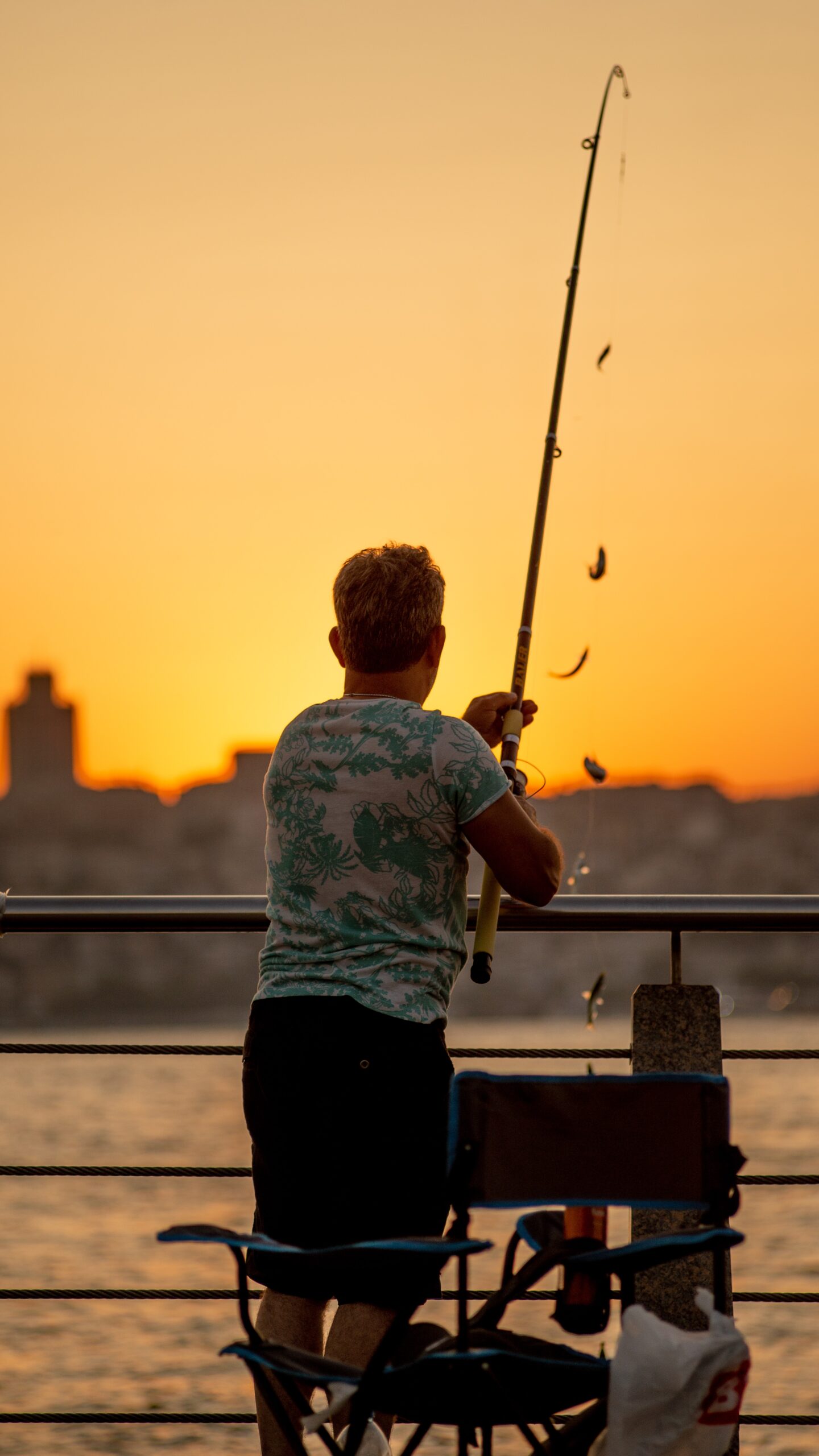
Night Fishing Etiquette
Maintaining a quiet and respectful environment
Night fishing often involves a serene and peaceful atmosphere. It’s important to maintain a quiet and respectful environment to avoid disturbing other anglers and the natural surroundings. Keep your voice low and minimize unnecessary noise. This not only benefits your fellow anglers but also increases your chances of success, as noisy disturbances can scare away fish.
Avoiding overcrowding at fishing spots
Respect the personal space of fellow anglers by avoiding overcrowding at fishing spots. If a spot is already occupied, find another location where you can set up your equipment without interfering with others. Overcrowding can lead to conflicts and diminish the quality of the fishing experience for everyone involved. Remember, there are plenty of fishing spots to explore, so spread out and enjoy the night.
Properly disposing of trash and waste
Keeping the fishing area clean and free of trash is a shared responsibility among all anglers. Bring a trash bag with you and properly dispose of any waste you generate during your night fishing trip. Take extra care not to leave any fishing lines, hooks, or other potential hazards behind that could harm wildlife or other people. Leave the fishing spot as you found it, or even better, cleaner than before.
Respecting fish and their habitats
Respecting fish and their habitats is an essential aspect of night fishing etiquette. Practice catch-and-release whenever possible to preserve fish populations for future generations. Handle fish carefully and quickly to minimize stress and injury. If you decide to keep your catch, ensure it’s within legal limits and adhere to local regulations regarding size and bag limits. Remember, fish are a valuable resource that should be treated with care and respect.
Following fishing regulations and legal limits
Understanding and following fishing regulations and legal limits is crucial for responsible night fishing. Familiarize yourself with the local fishing regulations in your area, including any specific rules or restrictions that apply to night fishing. Know the size, bag limits, and seasonality of the fish species you’re targeting. Ignorance of the rules is not an excuse, so take the time to be informed and fish responsibly.
Navigating in the Dark
Familiarizing yourself with the fishing spot during daylight
Before attempting to navigate your fishing spot in the dark, it’s important to familiarize yourself with the area during daylight hours. Take note of any landmarks or reference points that can help you orient yourself at night. Pay attention to any potential obstacles or hazards, such as submerged logs or shallow areas. By familiarizing yourself with the fishing spot beforehand, you’ll have a much easier time navigating in the dark.
Using landmarks and GPS devices for orientation
Navigating at night can be challenging, especially in unfamiliar fishing spots. Use landmarks and GPS devices to help you maintain your orientation. Identify prominent landmarks such as trees, buildings, or distinct features of the shoreline that can serve as reference points. If available, use a GPS device or mobile app to mark your fishing spots and track your movements. This will help you confidently move between different areas of the fishing spot.
Marking your fishing equipment for easy identification
When fishing in the dark, it can be challenging to identify your fishing equipment, especially if you’re using multiple rods. Avoid confusion by marking your fishing equipment for easy identification. Use glow sticks, reflective tape, or personalized labels to distinguish your rods, reels, and other gear. This will save you time and frustration, allowing you to focus on your fishing experience.
Taking necessary precautions while moving around
Moving around during night fishing requires extra caution to avoid accidents or injuries. Walk slowly and deliberately, paying attention to your surroundings. Use a flashlight or headlamp to illuminate your path and any potential obstacles. Be mindful of uneven terrain, rocks, or tree roots that could cause you to trip or fall. By taking necessary precautions, you’ll ensure your safety while enjoying your night fishing adventure.
Avoiding dangerous areas, such as cliffs or steep banks
Some fishing spots may have hazardous areas, such as cliffs or steep banks, that pose a risk to your safety, especially in the dark. Avoid fishing near these dangerous areas to minimize the potential for accidents or injuries. It’s better to prioritize your safety and find a different location where you can fish comfortably and without unnecessary risks.
Preparing Food and Refreshments
Bringing food that is easy to handle in low-light conditions
When it comes to preparing food for a night fishing trip, choose options that are easy to handle in low-light conditions. Opt for finger foods or items that can be eaten without utensils. Sandwiches, wraps, or individual snacks like trail mix or granola bars are great choices. This way, you can enjoy your meal without the need for additional illumination or complicated food preparation.
Packing enough drinking water and staying hydrated
Staying hydrated is essential during any fishing trip, including night fishing. Pack enough drinking water to keep yourself hydrated throughout the night. Consider using a water bottle with a built-in light or reflective surface to easily locate it in the dark. Avoid consuming alcohol, as it can impair your judgment and reaction time, increasing the risk of accidents.
Choosing snacks that won’t attract unwanted wildlife
Selecting snacks that won’t attract unwanted wildlife is crucial to maintaining a safe and enjoyable night fishing experience. Avoid foods with strong odors or those that may leave crumbs or food waste behind. Opt for snacks that are individually wrapped or sealed to minimize the risk of attracting nocturnal animals. This way, you can satisfy your hunger without inviting unwanted wildlife into your fishing area.
Considering the convenience of pre-prepared meals
Pre-prepared meals can be a convenient option for night fishing. Consider packing ready-to-eat meals or using vacuum-sealed bags to store pre-cooked dishes. This saves you time and effort during your fishing trip, allowing you to focus on the fishing experience. Make sure to properly store any leftovers or food waste to prevent attracting nocturnal animals.
Properly disposing of food waste
Properly disposing of food waste is essential for maintaining a clean and wildlife-friendly fishing area. Pack a small trash bag or sealable container specifically for food waste. Never leave food waste behind or throw it into the water, as it can attract animals and potentially harm the ecosystem. Always properly dispose of your food waste in designated trash receptacles or bring it back home with you.
Adapting to Changing Conditions
Being flexible and adjusting your fishing strategy
When night fishing, it’s important to be flexible and willing to adjust your fishing strategy based on changing conditions. Fish behavior, water temperature, moon phase, and wind can all influence fish activity and feeding patterns. Pay attention to these factors and be willing to switch lures, change fishing depths, or modify your retrieval speed as needed. Adaptability is often the key to success in night fishing.
Monitoring changes in wind, moon phases, and tides
Monitoring changes in wind, moon phases, and tides can provide valuable insights for your night fishing trip. Wind direction and speed can affect the movement and distribution of baitfish, which in turn can attract predator fish. The moon phase can influence the feeding behavior of some fish species, with the full moon often triggering increased activity. Additionally, tides can create currents that concentrate fish in certain areas. Keep an eye on these factors and consider adjusting your fishing strategy accordingly.
Understanding how water temperature affects fish behavior
Water temperature plays a significant role in fish behavior, particularly during the night. Understanding how water temperature affects different fish species can help you adapt your fishing approach. Warmer water temperatures often result in increased fish activity, while cooler water temperatures may make fish more sluggish. Research the preferred temperature range for the fish species in your area and adjust your fishing techniques accordingly.
Adopting different techniques for clear or murky water
Water clarity can vary significantly from one fishing spot to another. Clear water conditions require a more subtle and finesse approach, with smaller and more natural-looking lures. Fish in clear water are more easily spooked, so it’s important to be stealthy and minimize disturbances. In murky water, on the other hand, fish rely more on their sense of vibration and sound. Use louder or more brightly colored lures to attract their attention and improve visibility.
Experimenting with various fishing depths
Fish behavior can vary depending on the fishing depth as well. Experiment with different fishing depths to determine where the fish are most active during the night. Start by fishing at different depths, such as near the surface, mid-depth, or closer to the bottom. Observe any bites or movements and adjust accordingly. Keep track of successful patterns to replicate them in similar fishing locations or conditions.
Night fishing offers a unique and exciting angling experience. By carefully choosing the right location, gathering the essential gear and equipment, taking safety precautions, mastering night fishing techniques, utilizing lights and visibility aids, dealing with nocturnal wildlife, following night fishing etiquette, navigating in the dark, preparing food and refreshments, and adapting to changing conditions, you can make the most of your night fishing adventure. Keep in mind that night fishing requires additional attention to safety, etiquette, and preparation due to the challenges posed by low-light conditions. With the right approach and mindset, you’ll be well on your way to reeling in that elusive catch under the cover of darkness. Happy night fishing!

